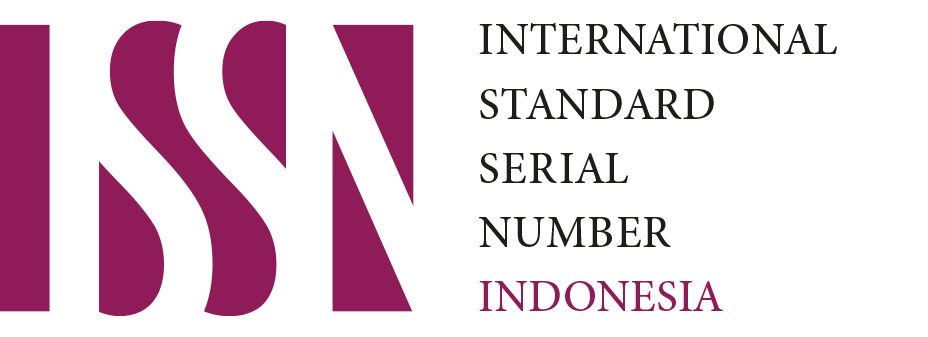The Usage of Web 2.0 as Promotion Media in Indonesia University Libraries
Downloads
The usage of web 2.0 has become popular among young people in Indonesia. One of the purpose of using web 2.0 is for promotion in some university libraries. The emerging of the web 2.0 as promotional media is corelating with the development of digital library. The paper aims are (1) to describe the usage of web 2.0 for academic libraries promotion. (2) to describe the information / content of those web 2.0. (3) to describe the promotion activity through web 2.0. This research population is all university libraries in Indonesia, but only 40 university librraries that conduct promotion through web 2.0. The website observation is done between May-July 2013. The research results are (1) the university libraries in Indonesia are use facebook, twitter, and flikr to promote library programs and interaction with users. The web 2.0 consist of information about new book release, user education, general information about library services, and information literacy. (3) some of univerity libraries taking seriously and actively promote their library services, but some of them are don't use the web 2.0.
Downloads
Abram, S. (2007). Can this 2.0 stuff help libraries with promotion?. Retrieved from http://www.imakenews.com/sirsi/e_article000862006.cfm?x=bb1lcgk,b5ptdpv0
Chua, A.Y. K., Goh, D.H. (2010). A study of web 2.0 applications in library websites. Library and Information Science Research, 32(3).
Georgas, H. (2013). Google vs. the library: student preferences and perceptions when doing research using google and a federated search tool. Portal: Libraries and Academy, 13(2). 165-185. Retrieved from http://www.press.jhu.edu/journals/portal_libraries_and_the_academy/portal_pre_print/cur rent/articles/13.2georgas.pdf
Grazella, M. (2013, Juni 18). Facebook has 64m active Indonesian users. The Jakarta Post. Retrieved from http://www.thejakartapost.com/news/2013/06/18/facebookhas64mactiveindonesianusers.html
Harinarayana, N.S., Raju, N.V. (2010). Web 2.0 features in university library websites. Elecronic Library, 28(1).
Hosny, H., Powell, J.P., Heller, R. (2008). Promoting library services at fintel library (Roanoke college). Virginia Libraries July-September. Retrieved from http://scholar.lib.vt.edu/ejournals/VALib/v54_n3/hosny.pdf
Jain, P. (2012). Promoting open access to research in academic libraries. Library Philosophy and Practice, 5(1). Retrieved from http://digitalcommons.unl.edu/cgi/viewcontent.cgi?article1811&context=libphilprac
Kaur, K. (2009). Marketing the academic library on the web. Library Manajemen, 30(6/7), 454-468.
Le deuff, O. (2011). The library 2.0: origins of the concept, evolutions, perceptions and realities: Marketing libraries in a web 2.0 world.
Mahmood, K. (2011). Impact of web 2.0 technologies on US academic libraries. (Postdoctoral Research). LA: University of California (UCLA). Retrieved from http://www.academia.edu/1191162/Impact_of_Web_2.0_technologies_on_US_academic_ libraries_A_study_of_ARL_libraries
Matthews, B. (2009). Marketing today's academic library: a bold new approach to communicating with students. USA: American Library Association.
Shelly, C. F. (2011). Web 2.0 concept and application.
Torabi, N. (2011). Academic libraries should consider a strategic approach to promotion and marketing of e-book. Evidence Based Library and Information Practice, 6(4). Retrieved from http://ejournals.library.ualberta.ca/index.php/EBLIP/article/view/11625
Rogers, C.R. (2009). Social media, libraries, and web 2.0: how American libraries are using new tools for public relations and to attract users. Retrieved from http://www.statelibrary.sc.gov/docs/pr/201202_com_social_media_survey_dec_2011.pdf
Record and Library Journal by Unair is licensed under a Creative Commons Attribution-ShareAlike 4.0 International License.
1. The journal allows the author to hold the copyright of the article without restrictions.
2. The journal allows the author(s) to retain publishing rights without restrictions
3. The legal formal aspect of journal publication accessibility refers to Creative Commons Attribution Share-Alike (CC BY-SA).
4. The Creative Commons Attribution Share-Alike (CC BY-SA) license allows re-distribution and re-use of a licensed work on the conditions that the creator is appropriately credited and that any derivative work is made available under "the same, similar or a compatible license”. Other than the conditions mentioned above, the editorial board is not responsible for copyright violation.


 57201398420
57201398420

























